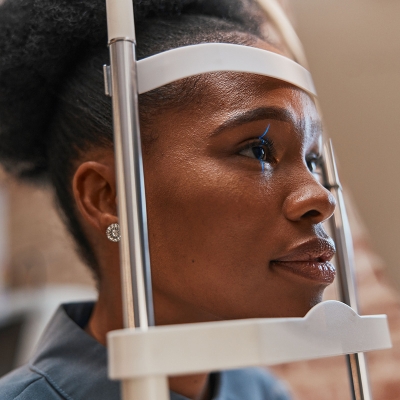How shingles may affect your vision
If you get shingles, the rash typically shows up on the torso, back, arms or legs, but it’s possible to get shingles in your eyes too. Learn how it may impact vision and what to do if it happens to you.

Shingles is an infection that is caused by the same virus as chickenpox. It results in a painful rash that typically develops on the torso, back, arms or legs. A small number of people get shingles in their eyes. When that happens, it can lead to serious vision problems.
Knowing the early signs is important for your health. Here are the signs and symptoms of shingles, how it affects your eyes, and how to manage it.
Stay on top of your eye health with an in-network provider. Search for an eye care provider now.
The symptoms of shingles
According to the Centers for Disease Control and Prevention, 1 in 3 people in the U.S. will get shingles in their lifetime.1 Shingles is often thought of as the adult version of chickenpox. While it’s true that both shingles and chickenpox are caused by the varicella zoster virus, they are not the same thing.
When the chickenpox virus you had as a child reactivates later in life, it’s known as herpes zoster. Also known as shingles, the virus is far more painful than chickenpox and can last longer too, says Monica Hazien, O.D., an optometrist with My Eyelab. “Nerve damage is a common side effect of shingles. It can be extremely painful and cause burning pain even after the rash has cleared.”
One to two days before the rash breaks out, your skin may feel a burning, tingling sensation or pain.2 Then small, painful blisters appear that can crack open, bleed or scab. Usually, the rash clears in 2 to 4 weeks.2 The National Institute on Aging notes that the most common symptoms of shingles include:2
- Fluid-filled blisters
- Burning, shooting pain
- Tingling, itching or numbness of the skin
- Chills, fever, headache or upset stomach
Shingles and your eyes
If you get shingles on your forehead, around your eyes, or on your nose, the virus can play out quite differently. When the rash is in those locations, it can move into your eye and optic nerve and begin to cause more serious problems. You may have:3
- Swelling of your eyelid
- A rash or blisters on your eyelid
- Eye pain, redness or tearing
- Sensitivity to light
- Blurry vision
But the biggest concern is inflammation, according to Dr. Hazien. The elevated intraocular pressure that comes with it can lead to glaucoma. Shingles can also cause:
- Corneal ulcers
- Corneal scarring
- Corneal blood vessel growth
- Uveitis (inflammation in the middle layer of the eyeball)
“If left untreated, shingles can potentially cause blindness,” she says.
If shingles has affected the cornea at the front of your eye, it can develop into keratitis.4 This is when your cornea becomes inflamed. It usually develops a month after having had eye shingles.
Shingles that occur at the back of the eye — in the retina or optic nerve – may cause you to develop viral retinitis. Here, the damaged retina becomes inflamed and evolves into acute retinal necrosis.5
How to treat eye shingles
Early detection is key to minimizing long-term complications. Recovery is unique to each person, and many patients may need medication for years.
A diagnosis of eye shingles is usually reached through a comprehensive eye exam. Most often the virus can be treated with oral and/or antiviral medications. It may or may not need injections of antiviral medications into the eye, Dr. Hazien adds.
Other recommended treatments include topical eye drops, such as:2
- Corticosteroid eye drops: These reduce eye inflammation caused by shingles.
- Pupil-dilating eye drops: These keep the pupils open to relieve pain caused by internal ocular inflammation from shingles.
Dr. Hazien notes that even with proper care, some patients may still develop eye disorders such as corneal scarring, glaucoma or retinal disease. For more serious ocular complications of shingles, such as optic neuritis and retinitis, intravenous steroids should be considered, she says, adding: “Close follow-up and monitoring with an eye doctor is recommended during treatment.”
Providers in the UnitedHealthcare Vision Network are here to help keep your vision healthy. Search for an eye care provider now.
Sources:
- Shingles (Herpes Zoster) Centers for Disease Control and Prevention, last reviewed February 2022.
- Shingles National Institute on Aging, last reviewed October 2021.
- What Is Shingles (Herpes Zoster)? Eye Smart, American Academy of Ophthalmology, last reviewed September 2022.
- Varicella Zoster Virus Stromal Keratitis and Endotheliitis EyeWiki: American Academy of Ophthalmology, May 2022.
- Acute Retinal Necrosis StatPearls, last updated February 2023.


